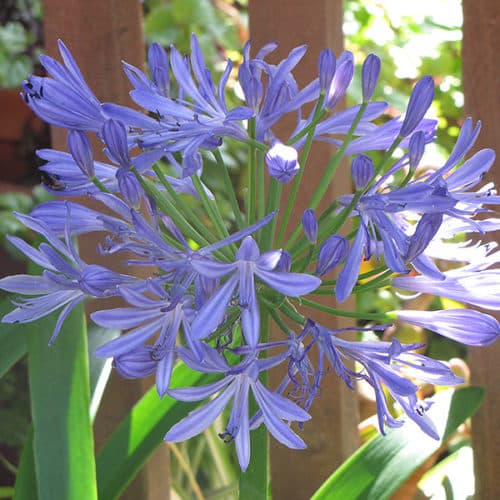Seasonal Agapanthus Care: Preparing for Winter and Summer
Unleashing the Secret to Effective Agapanthus Farming: Idea for a Flourishing Garden
In the realm of horticulture, cultivating agapanthus efficiently calls for a calculated method that includes different elements of plant care. By comprehending the subtleties of agapanthus growing, one can produce an atmosphere where these plants grow and grow perfectly.
Growing Agapanthus: Ideal Practices
When growing Agapanthus, appropriate dirt prep work is essential for making sure effective development and development of these beautiful flowers. Agapanthus, frequently referred to as Lily of the Nile or African lily, thrives in well-draining dirt with a somewhat acidic to neutral pH level - Agapanthus. Before growing, it is important to amend hefty clay soils with natural matter such as garden compost or peat moss to improve drainage and give crucial nutrients for the plants
To plant Agapanthus, pick a place that receives full sunshine to partial shade, as this will certainly advertise healthy growth and bountiful flowering. Dig an opening twice the size of the plant's root round and place the Agapanthus at the very same deepness it was previously growing. Carefully backfill the hole with soil, weighing down securely to eliminate any type of air pockets around the origins.
Water the freshly grown Agapanthus completely and remain to keep the dirt uniformly damp, particularly during the plant's energetic growing season. Agapanthus. Applying a balanced fertilizer once a month can even more sustain the plant's development and flowering. By complying with these ideal practices for growing Agapanthus, you can produce a magnificent display of these captivating flowers in your yard
Suitable Dirt Issues for Agapanthus
For optimal development and flowering success of Agapanthus plants, making certain the soil conditions are optimal is crucial. Agapanthus chooses soil that is abundant in nutrients, so integrating a well balanced plant food throughout the growing season can promote healthy and balanced growth and dynamic flowers.

Watering and Feeding Tips
To make sure healthy and balanced growth and dynamic flowers, appropriate watering and feeding methods are important for effective Agapanthus growing. Agapanthus plants profit from regular watering, especially throughout the growing season.
When it pertains to feeding Agapanthus, a well balanced fertilizer with equivalent components nitrogen, phosphorus, and potassium can be applied in the springtime to promote healthy development and blooming. Slow-release plant foods are ideal for supplying nutrients progressively over an extended period. Avoid over-fertilizing, as this can cause extreme foliage development at the expense of blooms.
In addition, incorporating organic matter like compost into the dirt can enhance nutrient degrees and improve soil framework, aiding in the total health of the Agapanthus plants. By following these watering and fertilizing tips, gardeners can ensure their Agapanthus plants flourish and generate stunning screens of flowers.
Pruning and Deadheading Strategies
Appropriate trimming and deadheading techniques play a vital role in preserving the health and wellness and visual appeals of Agapanthus plants, matching the important methods of watering and feeding for successful farming. Trimming Agapanthus great post to read includes getting rid of spent blossom heads, yellowing or dead fallen leaves, and overall shaping click to investigate of the plant to promote better growth. Deadheading, the procedure of removing faded flowers, not just improves the plant's appearance yet additionally encourages additional flowering.
When deadheading Agapanthus, it is advisable to clip off the blossom stem at the base making use of sharp, tidy shears. This procedure redirects the plant's energy from seed manufacturing back into root and vegetation development, promoting a healthier and more robust plant. Routine deadheading can prolong the growing duration of Agapanthus and prevent self-seeding, which can lead to overcrowding.
In regards to trimming, Agapanthus usually take advantage of a light trim after blossoming to tidy up the plant and urge fresh growth. Reducing the spent flower stems and getting rid of any type of broken or dead vegetation assists maintain the plant's vitality and total look. Nevertheless, it is necessary to avoid reducing right into the crown of the plant, as this can weaken its wellness.

Protecting Agapanthus From Vermins and Diseases
Applying efficient bug and illness administration strategies is critical to protecting the health and wellness and vigor of Agapanthus plants in farming. One typical insect that impacts Agapanthus is the Agapanthus borer, a caterpillar that passages into the plant, triggering damages to the leaves and flowers.
In addition to insects, Agapanthus are prone to conditions such as origin rot and fungal leaf spots. By staying vigilant and addressing pest and illness concerns immediately, gardeners can help their Agapanthus thrive and prosper.

Final Thought
To conclude, successful farming of agapanthus requires appropriate growing methods, perfect soil conditions, adequate watering and feeding, regular trimming and deadheading, and defense from diseases and bugs. By following these methods and tips, gardeners can make sure a growing yard full of gorgeous agapanthus blossoms. Agapanthus. Bear in mind to preserve regular treatment and focus to detail to promote the wellness and durability of these sensational plants
When growing Agapanthus, proper soil preparation is necessary for ensuring successful development and growth of these gorgeous flowers.Water the freshly planted Agapanthus extensively and proceed to maintain the dirt uniformly wet, especially throughout the plant's active expanding period.For ideal development and flowering success of Agapanthus plants, guaranteeing the soil conditions are excellent is vital. When hair transplanting or planting Agapanthus, guarantee the soil is well-prepared to give the necessary foundation for the visite site plants to establish themselves efficiently. One usual pest that affects Agapanthus is the Agapanthus borer, a caterpillar that tunnels right into the plant, triggering damage to the blossoms and leaves.